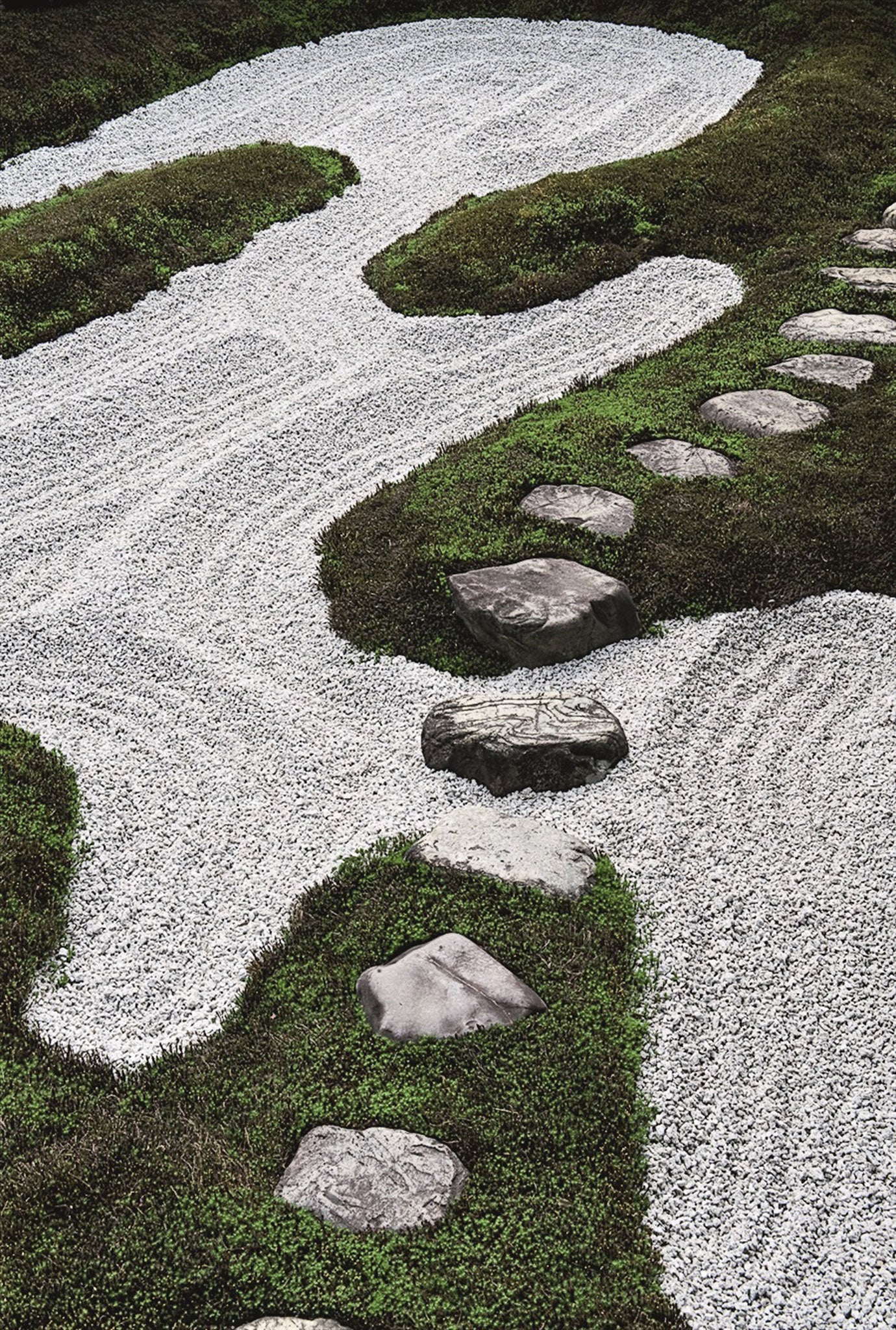Restraining order: Zen and the art of garden maintenance

"Restez Zen", as the French say. Well, maybe not the ones who wrote my dictionary, which seems curiously quiet on the subject, but certainly the ones who composed my recent issue of Marie Claire. Chillax! they exhort us, as a rough translation. Keep your Zen topped up.
Zen in the garden, though, means something considerably more uptight than a chill-out zone. Because for this, we have to look to Japan: raked gravel, artfully clipped trees, posed stones with huge symbolic meaning. My mum always thought it was a highly tempting prospect: "My friends and I used to talk about how great it would be to have a Zen garden. We were like, 'Oh god, gardening's such hard work. Wouldn't it be so much better to just have a nice raked bit of gravel? So much simpler…'"
But would it be simpler? Or much, much more complicated? Yoko Kawaguchi, a long-time traveller between the States and Tokyo, her birthplace, has just published "Japanese Zen Gardens" (£30, Frances Lincoln), a serious, contemplative attempt to set Zen gardens into a properly informed context. No more flaky French, then, or lazy English: more, the Japanese exercise of restraint and composure, plus a set of binding rules, producing gardens of paradoxical creativity and constant beauty.
And it is restraint on a grand scale. There are gardens in Kawaguchi's book that don't even contain plants: Ryoan-ji in Kyoto, the Temple of the Dragon at Peace, is probably one of the most celebrated of these landscapes; a rectangle of grey stones, with blossom trees peering in from outside over the protective walls, dangling in a frothy burst of pink as if they're slightly teasing the gravel, wondering whether one day they might finally make it into the garden itself. (I have bad news for the blossom trees there, actually.)
Of course, it always feels like you're venturing into dangerous territory when you try to understand the gardens of a foreign culture. There you are, thinking a little mossy mound is all sweet and green, and it turns out it symbolises death. Thankfully, Kawaguchi is a perfectly qualified go-between for an English person peering into the strange symbolic world of the Japanese garden (she now lives in the UK, and dedicates the book to the memory of her very English-sounding father-in-law, John Rees).
Kawaguchi explains tradition, imagery and meaning with great skill. And the images, by regular world-garden-travelling photographer Alex Ramsay, are up to his normal high standards. In fact, on many of the pages, you find yourself wondering whether you'd have rather had more text (so interesting) or bigger photos (so delightful).
What the book can't, of course, capture are the many processes that go into this style of gardening. Most central of all of which is the raking. There is plenty written in Zen Buddhist literature about the practice of raking, and the necessity for pure, focused attention. It turns out that the Buddhist raker scores highly: they might inadvertently achieve enlightenment just clearing up leaves. But if not, there's also meditating: a meditator might also take up position on a sitting rock, a zazen-ishi, and use the garden as an object of contemplation. Or even simply feel the wind and gaze at the moon.
And of course, we're on firmer ground when it comes to a final Zen-garden tradition: a nice cup of tea. Tea houses dot these gardens, and ceremonies are regularly held. Drinking tea as a spiritual practice: now there, the English and the Japanese can surely come to some sort of agreement.
A zen glossary: From carp stones to calm moments
Bonsan
You've heard of bonsai, now try bonsan – the art of creating miniature landscapes in tiny containers, using stones for mountains and gravel for the sea.
Ryumon Baku
A "dragon-gate waterfall" that incorporates a rigyo-seki – a stone that represents a carp trying to swim up the falls.
Sute-ishi
A large significant commanding stone, posed by itself, which balances the design of the whole garden.
Wabi
The process of appreciating a moment of calm while pondering the fleeting nature of existence. There's also Wabi-cha, where you do it while having a cuppa.
Subscribe to Independent Premium to bookmark this article
Want to bookmark your favourite articles and stories to read or reference later? Start your Independent Premium subscription today.

Join our commenting forum
Join thought-provoking conversations, follow other Independent readers and see their replies